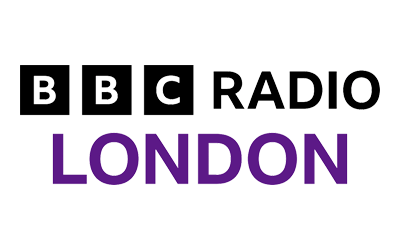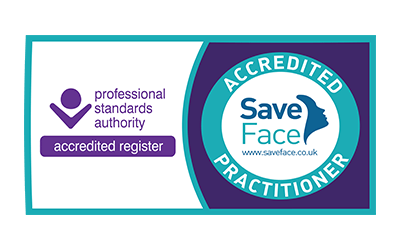Heavy breasts can cause back, neck and shoulder complaints, bad posture and even breathing difficulties and a breast reduction is a highly effective surgical procedure to reduce the size, volume, shape and weight of the breasts. Here are some of our most frequently asked breast reduction questions. If you’d like any more information, call 02037 335839 to speak to one of the team or arrange a breast reduction consultation.
Quick Links
FAQs for Breast Reduction Surgery (Mammoplasty)
Breast Reduction Surgery, formally known as “Reduction Mammoplasty” is a surgical procedure for reducing the size of large breasts.
While women of all ages can benefit, it’s usually never performed before the breasts are fully developed. This is because there have been cases reported where young teenage girls have had the operation only to find 2-3 years later that a significant enlargement has occured again(very rare). As a guideline, we normally wait until after the 18th birthday, although each situation is looked at individually and in more extreme cases, where there are clearly problems, then the procedure can be performed earlier. If you are a smoker you will be asked to stop smoking well in advance of surgery. Smoking seriously constricts blood vessels and therefore decreases blood flow to a given area resulting in poor healing. Aspirin and certain anti-inflammatory drugs and other medications can cause increased bleeding, so you must avoid these. If you are significantly overweight then planned preoperative weight reduction is encouraged but this alone does not necessarily rule you out for an operation. In fact many times the achievement of a reduced breast size can become a stimulus for further planned weight loss.
A breast reduction procedure is performed under general anaesthesia and usually takes between 90 minutes and 2 hours.
Most patients only require an overnight stay in hospital.
Before going down to theatre, Mr. Karidis uses a marking pen to draw on the breasts in order to determine the exact position and size of the newly operated breasts. He will then show you approximately where the new breast and nipple position will be placed. Breast reduction surgery is possibly one of the most demanding aesthetic procedures. It is imperative therefore that you talk with Mr. Karidis so that he has a full and proper understanding of your wishes. Try to convey, as much as is possible, how little or large you would like to be following your surgery. This will minimise the possibility of having too little or too much removed. Excess breast tissue, fat and skin are then removed. During the operation, the nipples are preserved on a stalk of breast tissue and repositioned by moving them to a new higher location, all in accordance with the preoperative markings. So although a breast size reduction is performed, all patients will also benefit from a breast uplift as well. The nipple is usually positioned in a line level with approximately the middle part of your arm or the level of your under breast crease. The scar is situated around the nipple and extends vertically downwards to the crease under your breast. A small horizontal scar within this crease is also required. In general, although many times Mr. Karidis’ technique avoids the older type of unsightly long anchor scars occasionally these are required. Mr. Karidis will be able to discuss this with you at the time of your consultation and show you precisely where these will be situated. Once the surgery is complete, surgical tapes, and a light dressings are applied over the suture lines. All sutures used are of the dissolving kind and will not need to be removed. You will also then be asked to wear a firm sports bra for support. Mr. Karidis does not use drains routinely. He has deemed these not necessary and has stopped using them for a number of years, without any adverse effects. Patients appreciate the fact that they no longer require any drains to be removed from the breasts after the surgery.
Our surgical understanding, the techniques and instrumentation have improved over the years and Mr. Karidis takes advantage of all these to deliver the best in terms of results. With these new techniques, pain is significantly improved compared to the surgery performed a few years ago. Therefore most ladies, who have breast reduction surgery with Mr. Karidis, complain or only mild to moderate discomfort after surgery. This of course should be well controlled with pain killers. The pain usually improves and dissipates after the first 4-5 days.
Scars are not a complication but a normal event after any surgery. Even though in recent years the scars in breast reduction surgery have become smaller and finer, nonetheless the scars are still somewhat lengthy and may take many months or years to settle. However as the scars are around and below the nipples, these shouldn’t be noticeable even in low cut clothing or a bathing suit. You should always expect these to be red, raised, lumpy and even itchy to begin with but with time they should fade and flatten. This is the natural evolution of the healing process. It is important to keep in mind that this may take up to two years to complete. Daily massage of the scars during this time period is advised to expedite and facilitate this process. You will also be provided with scar reducing plasters and gel in order to improve the appearance of your scars. You must understand however that no responsible surgeon will ever be in a position to predict anyone’s scars ultimately.
Once back in your room, you will notice bandage dressings around your breasts. You will then be helped to put on your wireless sports bra for support. You will also notice a drip in the back of your hand. This is there so that we may replace fluids lost during the operation. Blood transfusions are not routinely necessary except only in extremely rare situations(extra bleeding). Although it is possible, in fact in Mr. Karidis experience, he has never required the need for any blood transfusions for any of his patients. After surgery it is important that you maintain good circulation in your legs and thus you will be advised to slowly get up and about, and actively move the joints in your feet, knees and hips quite regularly. Just before your discharge from hospital, you are usually given an appointment for about 10 days to have the dressings changed and wounds inspected.
You will need to wear the sports bra continuously for 6 weeks (apart from when washing) after surgery. It is also important to avoid any strenuous upper body exercise for at least 6 weeks.
Following surgery you will experience some swelling and bruising of the breasts. This will be variable. The bruising , if it is present ,usually lasts for about 2-3 weeks. While most of the swelling will have also dissipated by this time, some subtle swelling may still be present for up to 4-6 months. Occasionally the swelling can distort the nipple area, leading some pulling in of the nipples. This is normal and usually subsides in the coming weeks. After surgery you may notice that the breasts feel quite firm and taut, particularly along the edges of the incision site. This will be as a result of the normal healing process laying down elements of scar tissue to facilitate healing. Occasionally small lumpy areas develop within the breast. This is called Fat necrosis where some small areas of fat cells within the breast tissue do not survive the trauma of surgery and die as a result. In this process, the fat becomes hard before gradually softening over a period of weeks and months. When this occurs, massage as instructed will speed up the recovery. You should also expect the sensation to the skin in the nipples and surrounding skin to be reduced after surgery. This is as a result of surgical trauma to the nerves in the region. Although this usually recovers in a few months, permanent numbness in some areas may ensue. You may also experience some asymmetry or unevenness in the weeks after your surgery. It is normal for any pair of breasts to be slightly uneven and this is no exception in large breasted ladies. Although every effort is made to make the breasts symmetrical, it is not always possible however to achieve this exactly.
Whilst it is true that when a Breast reduction is performed by an experienced qualified plastic surgeon the risks are small, nonetheless, specific complications with this procedure can and do occur. As in any procedure the risk of significant infection is always possible. This is minimised by careful surgical technique and the preventative administration of antibiotics at the time of surgery . However despite these measures mild infection is relatively common and can occur around the incision sites, but usually subsides over a period of about 2 weeks. Risks such as leg and lung blood clots are very rare. Early mobilisation by moving around as soon after the surgery as possible reduces this considerably. Mr. Karidis regularly deploys anti-clotting measures such as special stockings (TEDS) and compression devices(Flowtron) during surgery to minimise this. As mentioned already, swelling should be expected after this operation. When mild or moderate swelling is present, the body rapidly reabsorbs this. Very occasionally, increased bleeding can lead to more significant swelling and the development of a haematoma (a collection of blood under the skin)-less than 1% incidence. If this were to happen, surgical drainage to evacuate this would be required. Ultimately however this should not affect the final outcome. As described in the surgical details, during the operation, the nipples are preserved on a stalk of breast tissue and repositioned. In the vast majority of patients these remain natural, with normal contraction and some sensitivity. Very rarely however the stalk of the breast tissue develops inadequate blood supply to maintain nipple viability and some sloughing of part, or even more rarely, the entire nipple can occur. This complication will mean that prolonged dressing will be required over the nipple area until natural healing occurs. It is then possible that some reconstruction of the nipple as a secondary procedure, may be be required. Thankfully with modern techniques this complication is very rare (less than 1%). During the first 2 -3 weeks after surgery, some patients may also experience a minor loss of wound adhesion, suture extrusion, or even chafing of the skin at any point of the incision sites. One of the most common sites is the point where the vertical scar meets the nipple and or the under-breast crease. This is a temporary complication, which will require regular dressing changes initially. Eventually a scab develops over this, which subsequently separates after 3-4 weeks. A padded dressing for a period of a few weeks decreases the likelihood of this occurring. However some distortion of the skin around the scar may ensue. Further revision surgery may occasionally be required if necessary.
Breast Reduction surgery probably has one of the highest satisfaction rates of all cosmetic procedures. This is because women who had been burdened with the effects of overly large breasts for many years suddenly feel literally “liberated” and able to do things that were difficult or uncomfortable prior to surgery. There are scars however these are around and below the nipples, these shouldn’t be noticeable even in low cut clothing or a bathing suit.
Ideally it is best to have completed your family prior to having a breast reduction operation. This is because inevitably hormonal changes during pregnancy and breast feeding affect the breasts and so this may alter your breast shape and size afterwards. Patients therefore who plan to become pregnant should usually postpone the operation until after their family is complete. Of course this is not always possible and thus any decision to perform a breast reduction operation prior to this must naturally be weighed and balanced against this risk and the benefits offered by this type of surgery. Although the technique used by Mr. Karidis ensures the best possible continuity between the breast and nipples thus increasing the possibility of breast-feeding after breast reduction surgery, this however cannot ever be guaranteed.
With the more modern techniques Mr. Karidis applies to this operation, you should be able to get back to a routine fairly quickly. As a guideline, most patients with office based work can return to their duties after 4-5 days. Of course remember variations do occur in the time individuals take to heal. Others find it more appropriate to take a further 7-10 days to rest. Walking is helpful in the first 3-4 weeks as this improves the circulation and helps reduce the swelling, and the chance of blood clots developing. Heavy lifting or strenuous activity is best avoided in the first 6 weeks after surgery. Lower body exercise may be commenced after 14 days, with high impact aerobic type of exercises only allowed after 6 weeks. Overall common sense rules in the recovery period. If what you are doing is uncomfortable then don’t do it!
Read our breast reduction surgery recovery timeline for more information.
As a guideline, most patients can return to work after 1 week. However, patients whose work involves strenuous activity or lifting may require 2 weeks off work. It is best to wait for 4 weeks before commencing moderate lower body exercise with the view to be back to normal activities by around 6 weeks post surgery. Overall common sense rules in the recovery period. If what you’re doing is uncomfortable then don’t do it!
It is always useful to allow yourself plenty of time to recover and organise sufficient time off work. 1-2 weeks off should give you sufficient time to allow any obvious swelling to subside. Ensure any blood or any other tests that are required are undertaken well in advance to avoid any potential delays.
You should be in a position to travel by car the next day with some care required for the seatbelt across your chest. You are able to fly within a couple of days provided you wear appropriate flight socks.
We look forward to seeing you at the clinic around 7 and 14 days after your surgery to review your result and check all is healing well. Providing all is well, you will usually see Mr. Karidis at around 6 weeks post operation for a routine check up. Further appointments can of course be made if necessary.
“Fractional Resurfacing” can really improve the look of scarring associated with breast reduction surgery.
In accordance with the National Healthcare Commission guidelines, and according to the last ten years of annual audit figures submitted to the Hospital of St. John and St. Elizabeth in London, Mr. Karidis has performed on average 40 Breast reduction procedures per year. It is easy to understand therefore that having been in private practice since 1997 Mr. Karidis has performed a large number of these procedures.
Breast Reduction Surgery, formally known as “Reduction Mammoplasty” is a surgical procedure for reducing the size of large breasts.
When you return to your room after your surgery, you will have dressings applied to the breasts. You will need to also wear a well structured sports bra after surgery. This will help keep swelling and bruising to a minimum and protect your new breasts. You may feel a little drowsy as a result of the anaesthesia but are likely to feel otherwise quite well. Discomfort is usually minimal with the help of some regular pain relief.
It is very common to have some bruising, swelling and minor asymmetry to the breasts. This is often completely normal and will settle over the course of the coming weeks. You may feel numb or tingly in some areas due to some nerve irritation. This usually resolved within the first 6 months of surgery.
A surgeon fee, anesthetist fee and hospital fee will be required. You will be given a breakdown of these costs on the day of your consultation.
Breast Reduction surgery has an extremely high satisfaction rate. The procedure will give confidence to the individual and allow them to wear clothes and undertake activities that were previously felt unsuitable.
















